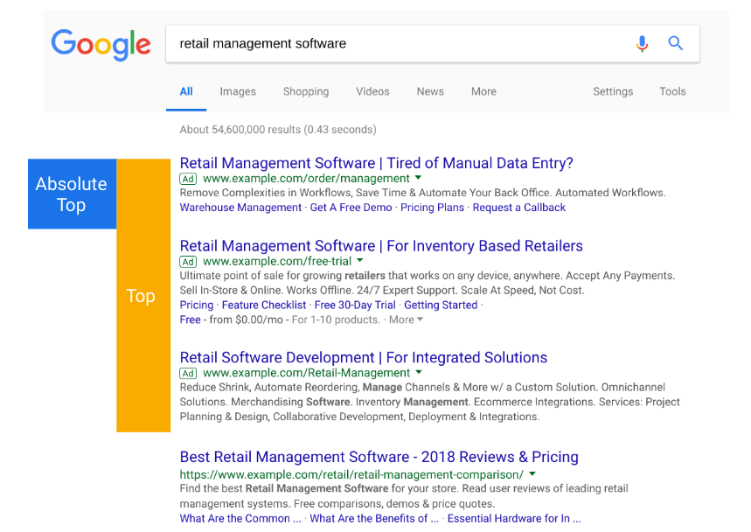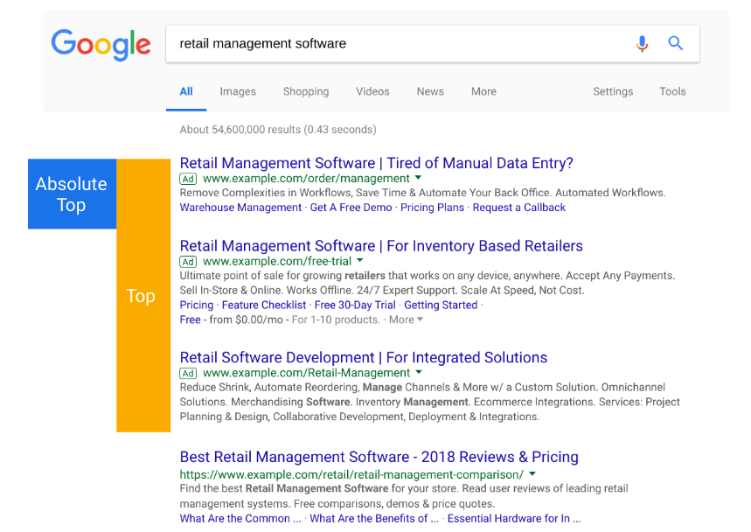Google Average Positions Update: What It Means

Google is retiring its Average Position metric in favor of four new prominence metrics originally announced at the end of last year.
Advertisers use the Average Position metric as a reporting indicator of where a specific ad fell in Google search results.
To date, an advertiser’s guiding light for budgeting and bidding search engine ads has been the Average Position metric.
The current metrics have been considered a foggy measure of success at best, especially as SERP real estate became more limited without side rail ad space available and crowded with both paid and organic content.
“This is one of the bigger changes in recent months, but for the majority of clients optimizing toward conversion-based goals, there will likely be less impact than those going for visibility.”

-Chris Michalak, Senior Director of Paid Search at Elite SEM
To give you a better gauge on your ad performance, Google has introduced four new ad position metrics driven by impression share rather than page position.
Google has provided us a detailed report on each of the new metrics here.
“Average position has always been a muddy metric. It’s important to take these figures with a grain of salt and focus more on what top impression share percentage drives the best results among more concrete KPIs. “

Here’s a look at the new metrics and how they might impact your placements.

The percentage that defines when an ad is the first ad listed above organic search results.
The number of impressions your ad has received in the very top position above organic search results divided by the estimated total number of eligible impressions.
The percent of your ad impressions shown anywhere above organic search results.
The number of impressions your ad has received in the top locations above the organic search results divided by the estimated total number of eligible impressions.
If you’re still aiming to use Average Position in your strategy, Google recommends search advertisers to use the Impression Share metrics to predict placement of an ad.
Then, Impression Rate metrics will help determine your ads success and guide strategic adjustments as needed.
The impact of this change largely depends on your overall strategy: Are you optimizing your ads based on conversion goals, or visibility?
“Clients running ads purely on page position-based automated solutions will now need to focus on utilizing Smart Bidding or SA360 to target impression share. Marin is already at-work providing a solution for these new metrics to be released in Q2, and we’re working with Kenshoo on a timeline,” explains Michalak.
“We’re also now losing insight into exactly where position ads fall below Position #1, so clients that rely on co-bidding strategies with other partners will need to rethink the way they handle their results approach.”
“Fortunately, we will still have average position for a few more months so we can compare it to the new metrics,” says Harms.
